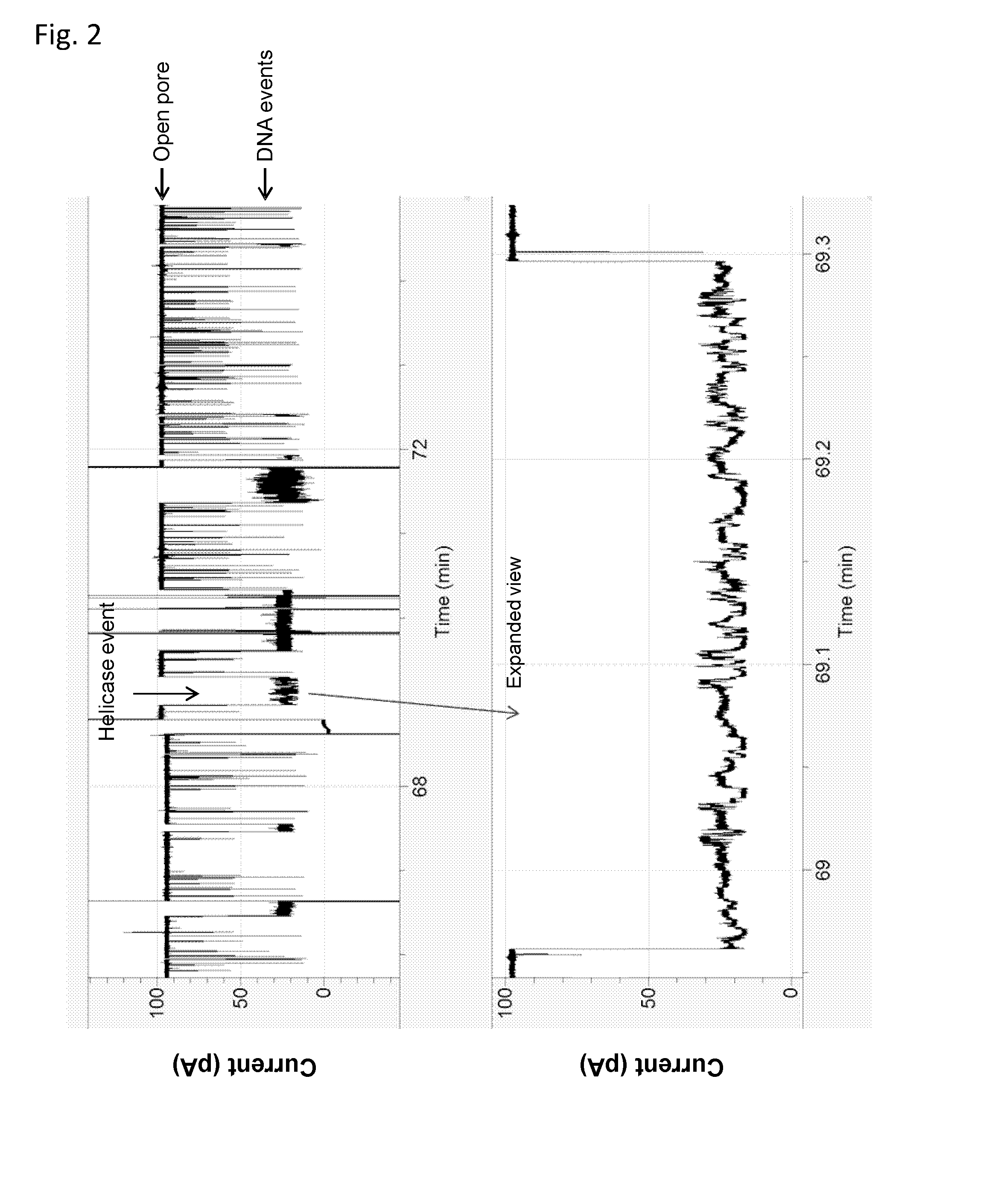Method for characterising a polynucelotide by using a xpd helicase
a polynucleotide and helicase technology, applied in the field of new methods of characterising target polynucleotides, can solve the problems of slow and expensive existing technologies
- Summary
- Abstract
- Description
- Claims
- Application Information
AI Technical Summary
Benefits of technology
Problems solved by technology
Method used
Image
Examples
example 1
[0169]This example illustrates the use of a XPD helicase (XPD MBu) to control the movement of intact DNA strands through a nanopore. The general method and substrate employed throughout this example is shown in FIG. 1 and described in the figure caption.
Materials and Methods
[0170]Primers were designed to amplify a ˜400 bp fragment of PhiX174. Each of the 5′-ends of these primers included a 50 nucleotide non-complimentary region, either a homopolymeric stretch or repeating units of 10 nucleotide homopolymeric sections. These serve as identifiers for controlled translocation of the strand through a nanopore, as well as determining the directionality of translocation. In addition, the 5′-end of the forward primer was “capped” to include four 2′-O-Methyl-Uracil (mU) nucleotides and the 5′-end of the reverse primer was chemically phosphorylated. These primer modifications then allow for the controlled digestion of predominantly only the antisense strand, using lambda exonuclease. The mU ...
example 2
[0179]This example illustrates the salt tolerance of a XPD helicase (XPD Mbu) using a fluorescence assay for testing enzyme activity.
[0180]A custom fluorescent substrate was used to assay the ability of the helicase to displace hybridised dsDNA (FIG. 5A). As shown in 1) of FIG. 5A, the fluorescent substrate strand (50 nM final) has a 5′ ssDNA overhang, and a 40 base section of hybridised dsDNA. The major upper strand has a carboxyfluorescein base at the 3′ end, and the hybrised complement has a black-hole quencher (BHQ-1) base at the 5′ end. When hybrised the fluorescence from the fluorescein is quenched by the local BHQ-1, and the substrate is essentially non-fluorescent. 1 μM of a capture strand that is complementary to the shorter strand of the fluorescent substrate is included in the assay. As shown in 2), in the presence of ATP (1 mM) and MgCl2 (10 mM), helicase (150 nM) added to the substrate binds to the 5′ tail of the fluorescent substrate, moves along the major strand, and ...
PUM
| Property | Measurement | Unit |
|---|---|---|
| Fraction | aaaaa | aaaaa |
| Fraction | aaaaa | aaaaa |
| Fraction | aaaaa | aaaaa |
Abstract
Description
Claims
Application Information
 Login to View More
Login to View More - R&D
- Intellectual Property
- Life Sciences
- Materials
- Tech Scout
- Unparalleled Data Quality
- Higher Quality Content
- 60% Fewer Hallucinations
Browse by: Latest US Patents, China's latest patents, Technical Efficacy Thesaurus, Application Domain, Technology Topic, Popular Technical Reports.
© 2025 PatSnap. All rights reserved.Legal|Privacy policy|Modern Slavery Act Transparency Statement|Sitemap|About US| Contact US: help@patsnap.com



